 1800mm HuskyOperating Manual
1800mm HuskyOperating Manual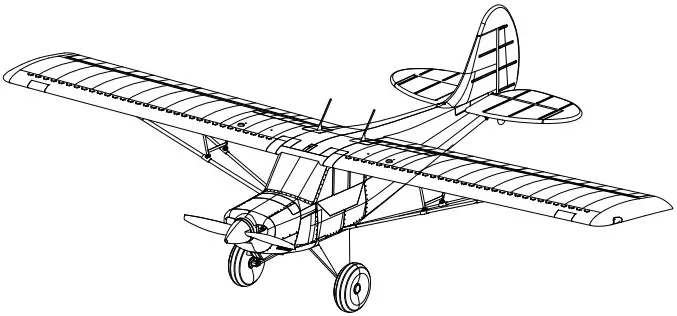 Special Edition
Special Edition
WARNING: This manual contains important information that will help you maintain and operate your model aircraft in a reliable and safe manner. Please read the instructions and warnings carefully prior to assembly, setup, or use.As this model aircraft is a sophisticated hobby product, it must be flown with safety and common sense in mind, failure in to do so may result in injury or property damage. This product is not intended for use by children without direct adult supervision.
Safety precautions and Warnings
As the user, you are solely responsible for the safe operation and maintenance of this product. Follow the directions and warnings listed in this manual, as well as that of supporting equipment (chargers, batteries, etc.), and always use common sense.This is not a toy. Not for children under 14 years of age.
- Always operate your model in an open area away from buildings, cars, traffic, or people. Never operate near people-especially children who can wander unpredictably. Never operate in populated areas for any reason, where injury or damage can occur.
- Always keep a safe distance in all directions around your model to avoid collisions or injury. This model is controlled by a radio signal subject to interference from many sources outside your control. Interference can cause momentary loss of control.
- Never catch the aircraft while it is in flight, the structure of the fuselage was not designed and protected for this purpose.
- Never operate your model in bad weather, including in excessively windy or precipitating conditions.
- Never operate your model with low transmitter batteries.
- Keep your throttle quadrant in its lowest position prior to and after every flight. Use the throttle cut function if able.
- Always use fully charged batteries and move batteries before disassembly.
- Avoid water exposure to all equipment not specifically designed and protected for this purpose.
- Avoid cleaning this product with chemicals.
- Never lick or place any part of your model in your mouth as it could cause serious injury or even death.
- Keep all chemicals, small parts, and anything electrical out of the reach of children.
Introduction
The Husky is a PA-18 inspired, high-winged light utility aircraft that made its first flight in 1986. Arrows hobby as recreated this backcountry workhorse- from rivet lines and body panels to the predictable STOL light characteristics- without overlooking any detail when creating the 1800mm Husky. Packed full of attractive features, the Arrows 1800mm Husky is prebuilt with rugged CNC landing gear, oversized balloon tires, and functional flaps for true STOL backcountry operations. Arrows Hobby is also proud to present a special Edition of the Husky featuring an alternative trim scheme and uprated electronics- 3948 700kv motor, 50A SC, and 23g metal servos. The Pro version allows expert pilots to further expand the flight envelope of the Husky- while fiber-reinforced control surfaces ensure precision control at these higher loads. Perfect for beginners and experts alike, the Husky is the ultimate Bush plane every pilot needs!
Features:
- Special Edition 3948 700kv motor, 50A ESC, 23g metal servos*6
- Excellent STOL and slow speed performance, allowing takeoffs and landings within 3m
- CNC landing gear absorb even the hardest of landings
- Ultra-durable oversized tires
- Scale navigation and landing lights
- Oversized battery compartment
- Screw-together assembly
- Functional flaps
- Attractive red/black trim scheme
- Made from durable EPO material
Specifications
| Wingspan | 1800mm(71in) |
| Overall length | 1200mm(47in) |
| Flying weight | ~ 2350g |
| Motor size | 3948 KV700 |
| Wing load | 49g/dm²(0.1oz/in²) |
| Wing area | 47.7dm² (739sq.in) |
| ESC | 50A |
| Servo | 23g Servo x 6 |
| Recommended battery | 5S 18.5V 3300mAh 40C |
Kit contentsBefore assembly, please inspect the contents of the kit. The photo below details the contents of the kit with labels. If any parts are missing or defective, please identify the name or part number (refer to the spare parts list near the end of the manual) then contact your local shop.
 |
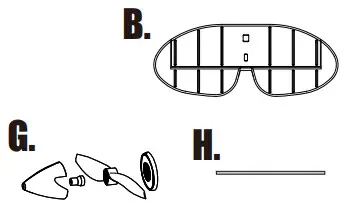 |
 |
 |
| A: FuselageB: Horizontal stabilizerC: Vertical stabilizerD: Main wing set | E: Main landing gear setF: AntennaG: Propeller and spinner setH: Wing sparI: Linkage rod and screw set (HKM3.0X16*8,KA3.0X16*2, HKM3.0X32*3) |
Model assembly

- With the fuselage inverted, slide the landing gear into the fuselage slots as shown.
- Slide the landing gear retainers into the fuselage slots and secure the assembly using the included screws.

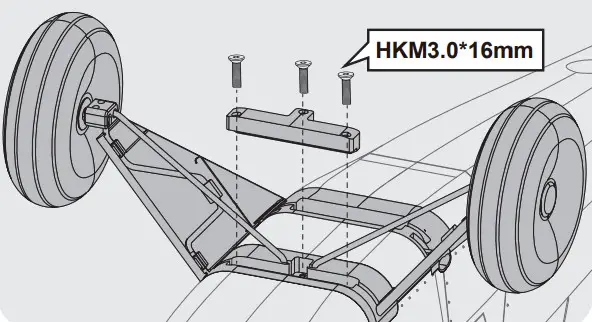

- Slide the wing spar into the fuselage pass through.
- Attach the wing struts to the wing as shown.


- With the fuselage inverted, connect the aileron servo wire then secure the wing and wing struts using the included screws.


- Place the horizontal stabilizer onto the fuselage cutout.

- Place the vertical stabilizer onto the horizontal stabilizer. Secure using the included screw.
- Attach both tailfins to the fuselage using the included screws.



- With the servo and elevator centered, connect the servo to the control surface using a pushrod.
- With the servo and rudder centered, connect the servo to the control surface using a pushrod.



- Place the antennae into their positions on top of the wings as shown, then push them aft to secure.


The propeller and spinner are secured onto the motor shaft in the order shown.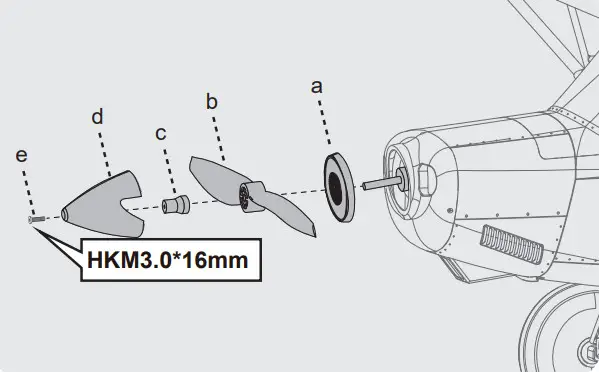
Battery installation
- Remove the battery hatch.
- Remove the hook and loop tape from the fuselage. Apply the looped surface to the battery.
- Install the battery into the fuselage- securing it with the preinstalled battery straps.
Note: The weight of each battery may vary due to different manufacturing techniques. Move the battery fore or aft to achieve the optimal center of gravity.
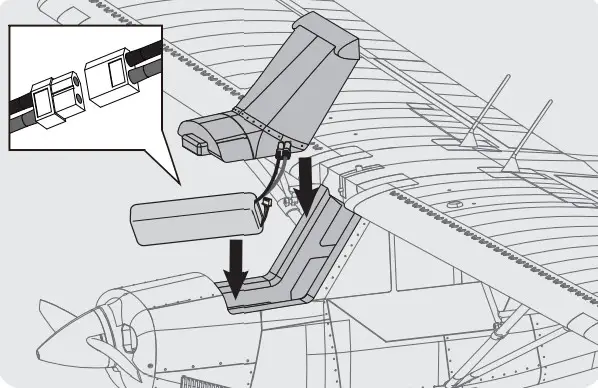
Receiver diagramThe cables from the servo connector board should be connected to your receiver in the order shown. Note that the LEDs can be powered by any spare channel on the receiver. Tuck the wire leads into the recessed cavity towards the rear of the battery hatch.
Preflight check
- The ESC included with the model has a safe start. If the motor battery is connected to the ESC and the throttle stick is not in the low throttle or off position, the motor will not start until the throttle stick is moved to the low throttle or off position. Once the throttle stick is moved to the low throttle or off position, the motor will emit a series of beeps. Several beeps with the same tune mean the ESC has detected the cells of the battery. he count of the beeps equals the cells of the battery. The motor is now armed and will start when the throttle is moved.
- The motor and ESC come pre-connected and the motor rotation should be correct. If for any reason the motor is rotating in the wrong direction, simply reverse two of the three motor wires to change the direction of rotation.
- The motor has an optional brake setting. The ESC comes with a brake switched off and we recommend that the model be flown with the brake off. However, the brake could be accidentally switched on if the motor battery is connected to the ESC while the throttle stick is set at full throttle. To switch the brake off, move the throttle stick to the full throttle and plug in the motor battery. The motor will beep one time. Move the throttle stick to the low throttle or the off position. The motor is ready to run and the brake will be switched off.
- Battery Selection and Installation. We recommend the 5S 18.5V 3300mAh 40C Li-Po battery. If using another battery, the battery must be at least a 5S 18.5V 3300mAh 40C battery. Your battery should be approximately the same capacity, dimension, and weight as the 5S 18.5V 3300mAh 40C Li-Po battery to fit the usage without changing the center of gravity significantly.
 After assembly and prior to your first flight, make sure all control surfaces respond correctly to your transmitter by referring to the diagram below.
After assembly and prior to your first flight, make sure all control surfaces respond correctly to your transmitter by referring to the diagram below.
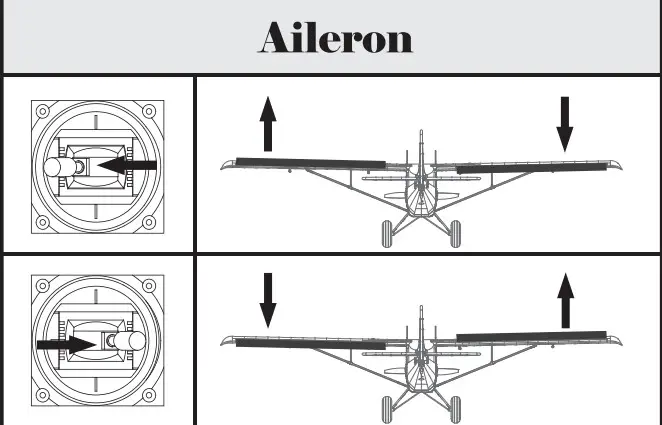
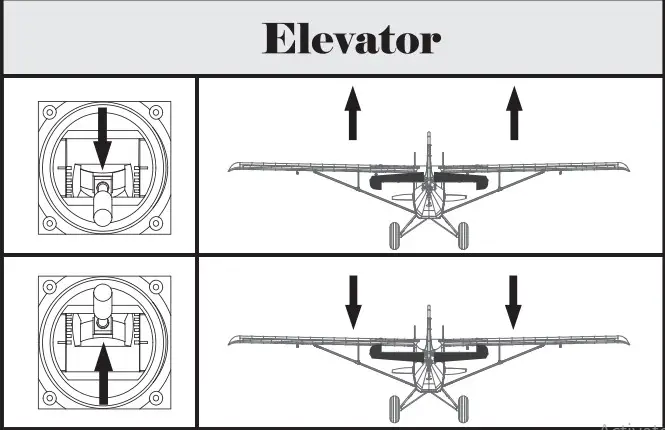
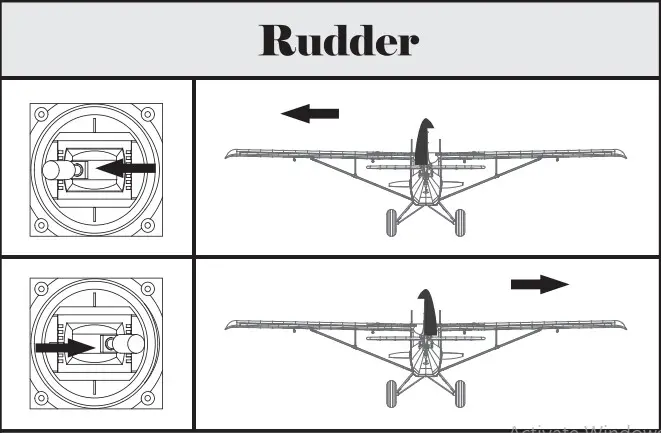
 The suggested control throw setting for the Husky Special Edition are as follows (dual-rate setting):
The suggested control throw setting for the Husky Special Edition are as follows (dual-rate setting):
Tips: The maiden flight should always be flown using low rates, fly the aircraft until you are familiar with its characteristics prior to trying high rates. Make sure the aircraft is flying at a decent altitude and speed prior to using high rates, as the aircraft will be sensitive to control inputs with the larger control surface movements.
| High Rate | Low Rate | |
| Elevator | 16mm up / down | 14mm up / down |
| Aileron | 28mm left / right | 12mm up / down |
| Rudder | 18mm up / down | 20mm left / right |
Clevis installation
- Pull the tube from the clevis to the linkage.
- Carefully spread the clevis, then insert the clevis pin into the desired hole in the control orn.
- Move the tube to hold the clevis on the control horn.
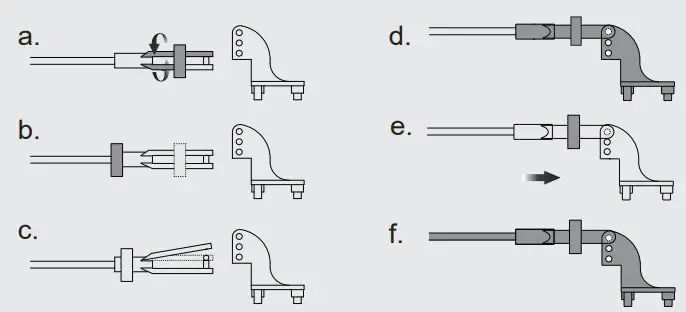
Control horn and servo arm settings
- The table shows the factory settings for the control horns and servo arms. Fly the aircraft at the factory settings before making changes.
- After flying, you may choose to adjust the linkage positions for the desired control response.
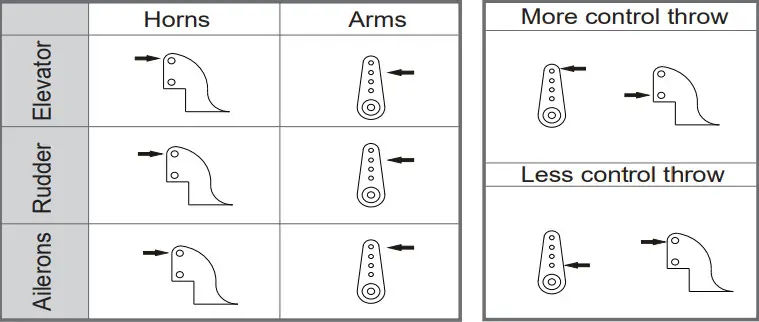
Finding the center of gravity
Finding the correct center of gravity is critical in ensuring that the aircraft performs in a stable and responsive manner. Please adjust the weight distribution so the aircraft balances in the range stated on the diagram.
- depending on the capacity and weight of your chosen flight batteries, move the battery forward or backward to adjust the center of gravity.
- If you cannot obtain the recommended CG by moving the battery to a suitable location, you can also install a counterweight to achieve the correct CG. However, with the recommended battery size, a counterweight is not required. We recommend flying without unnecessary counterweight.
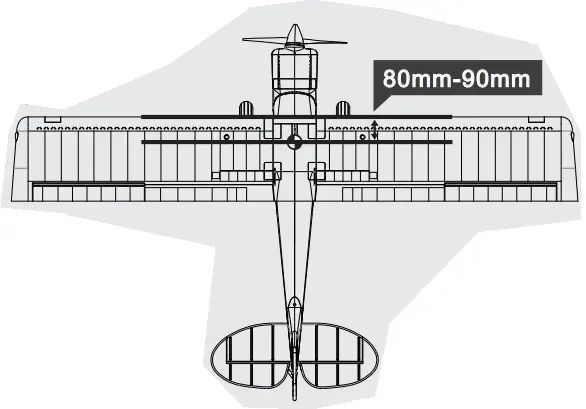
Before flying the model

Find a flying site clear of buildings, trees, power lines, and other obstructions. Until you know how much area will be required and have mastered flying your plane in confined spaces, choose a site that is at least the size of two to three football fields – a flying field specifically for R/C planes is best. Never fly near people – especially children, who can wander unpredictably.
 A radio range check should be performed prior to the first flight of the day. This test may assist you in detecting electronic problems that may lead to a loss of control- problems such as low transmitter batteries, defective or damaged radio components, or radio interference. This usually requires an assistant and should be done at the flying site. Always turn your transmitter on first. Install a fully charged battery in the battery bay, then connect it to the ESC. In this process, make sure that the throttle cut functionality is on, and that the throttle stick is secured in its lowest position- otherwise, the propeller/fan will engage and possibly cause bodily harm.
A radio range check should be performed prior to the first flight of the day. This test may assist you in detecting electronic problems that may lead to a loss of control- problems such as low transmitter batteries, defective or damaged radio components, or radio interference. This usually requires an assistant and should be done at the flying site. Always turn your transmitter on first. Install a fully charged battery in the battery bay, then connect it to the ESC. In this process, make sure that the throttle cut functionality is on, and that the throttle stick is secured in its lowest position- otherwise, the propeller/fan will engage and possibly cause bodily harm.
Note: Please refer to your transmitter manual that came with your radio control system to perform a ground range check. If the controls are not working correctly or if anything seems wrong, do not fly the model until you correct the problem. Make certain all the servo wires are securely connected to the receiver and the transmitter batteries have a good connection.
 Monitor and limit your flight time using a timer (such as a stopwatch or on the transmitter, if available). As modern Lithium Polymer batteries are not designed to discharge completely, when the battery runs low, the ESC will lower than completely cut the power to the motors to protect the battery. Often (but not always) power can be briefly restored after the motor cuts off by holding the throttle stick all the way down for a few seconds. To avoid an unexpected dead-stick landing on your first flight, set your timer to a conservative 4 minutes. When your alarm sounds you should land right away.
Monitor and limit your flight time using a timer (such as a stopwatch or on the transmitter, if available). As modern Lithium Polymer batteries are not designed to discharge completely, when the battery runs low, the ESC will lower than completely cut the power to the motors to protect the battery. Often (but not always) power can be briefly restored after the motor cuts off by holding the throttle stick all the way down for a few seconds. To avoid an unexpected dead-stick landing on your first flight, set your timer to a conservative 4 minutes. When your alarm sounds you should land right away.
Flying course
ake offPoint the aircraft into the wind while slowly applying power until the aircraft starts to track straight, use the rudder when necessary. When the aircraft reaches takeoff speed, ease back on the elevator stick until the aircraft is climbing at a constant rate without decelerating. Climbing at too steep of an angle at the relatively low speeds of a takeoff climb may result in an aerodynamic stall.
FlyingAlways choose a wide-open space for flying your plane. It is ideal for you to fly at a sanctioned flying field. If you are not flying at an approved site always avoid flying near houses, trees, wires, and buildings. You should also be careful to avoid flying in areas where there are many people, such as busy parks, schoolyards, or soccer fields. Consult laws and ordinances before choosing a location to fly your aircraft. After takeoff, gain some altitude. Climb to a safe height before trying technical maneuvers.
LandingLand the aircraft when you start to feel the sluggish motor response. If using a transmitter with a timer, set the timer so you have enough flight time to make several landing approaches. The model’s three-point landing gear allows the model to land n hard surfaces. Align the model directly into the wind and fly down to the ground. Fly the airplane down to the ground using 1/4-1/3 throttle to keep enough energy for proper flare. Before the model touches down, always fully decrease the throttle to avoid damaging the propeller or other components. the key to a great landing is to manage the power and elevator all the way to the ground and set down lightly on the main landing gear. With some practice, you will be able to set the aircraft gently on its main gear and hold it that way until the speed reduces enough where the nose wheel (tricycle landing gear aircraft) or tail wheel (tail draggers) settles onto the ground.
Maintenance
Repairs to the foam should be made with foam-safe adhesives such as hot glue, foam safe CA, and 5min epoxy. When parts are not repairable, see the spare parts list for ordering by item number. Always check to ake sure all screws on the aircraft are tightened. Pay special attention to make sure the spinner is firmly in place before every flight.
Troubleshooting
| Problem | Possible Cause | Solution |
| Aircraft will not respond to the throttle but respond to other controls. | ESC is not armed. The throttle channel is reversed. | Lower throttle stick and throttle trim to lowest settings. Reverse throttle channel on the transmitter. |
| Excessive vibration or propeller noise. | Damaged spinner, propeller, motor or motor mount.
Loose propeller and spinner parts. Propellor installed backward. |
Replace damaged parts.
Tighten parts for propeller adapter, propeller, and spinner. Remove and install propeller correctly. |
|
Reduced flight time or aircraft underpowered. |
Flight battery charge is low. Propeller installed backward. Flight battery damaged. | Completely recharge flight battery.
Replace flight battery and follow flight battery instructions. |
| Control surfaces are unresponsive or sluggish. | The control surface, control horn, linkage, or servo damage.
Wire damaged or connections lose. |
Replace or repair damaged parts and adjust controls.
Do a check of connections for loose wiring. |
| Controls reversed. | Channels are reversed in the transmitter. | Do the control direction test and adjust controls for aircraft and transmitter. |
| Motor loses power
Motor power pulses then motor loses power. |
Damage to motor, or battery. Loss of power to aircraft.
ESC uses default soft Low Voltage Cutoff(LVC). |
Do a check of batteries, transmitter, receiver, ESC, motor, and wiring for damage(replace as needed).
Land aircraft immediately and recharge flight battery. |
Spare parts list
| AHAJ101-SE | Fuselage | AHAJ115-SE | Sticker |
| AHAJ102-SE | Main wing set | AHAJ116 | Linkage rod |
| AHAJ103-SE | Horizontal stabilizer | AHAJ117 | Screw set |
| AHAJ104-SE | Vertical stabilizer | AHAJ118 | Float set |
| AHAJ105 | Battery Hatch | AHPROP009 | Propeller |
| AHAJ106 | Wheelset Front landing gear set | AHShaft003-SE
AHMount003-SE |
Motor shaft
Motor Mount |
| AHAJ107 | Supporting bar set | AHBoard008-SE | Motor Board |
| AHAJ108 | Cowl | AHKV700 | Brushless motor |
| AHAJ109 | Propeller plate | AHESC50A | 50A ESC |
| AHAJ110 | Wing Pipe | AH23MGP | 23g metal gear servo positive |
| AHAJ111 | Antenna | AHBAT02 | 5S 18.5V 3300mAh 40C |
| AHAJ112 | LED | VEC-AH011V2P | Vector(Gyro) |
| AHAJ113 | Lamp Cover | ||
| AHAJ114 |
MADE IN CHINA
References
[xyz-ips snippet=”download-snippet”]

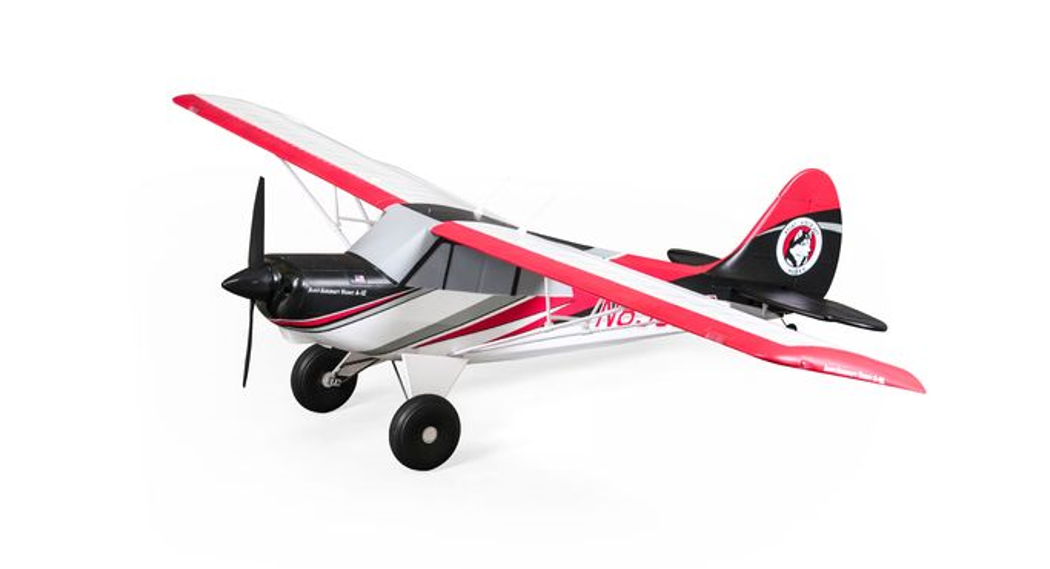
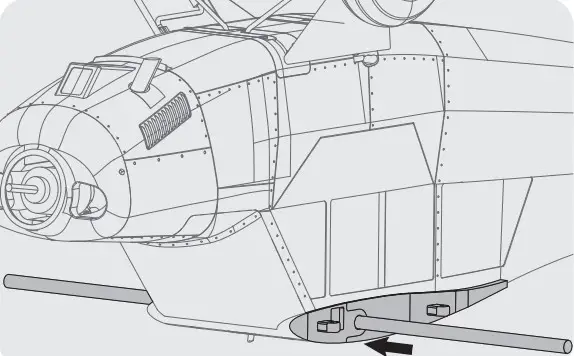
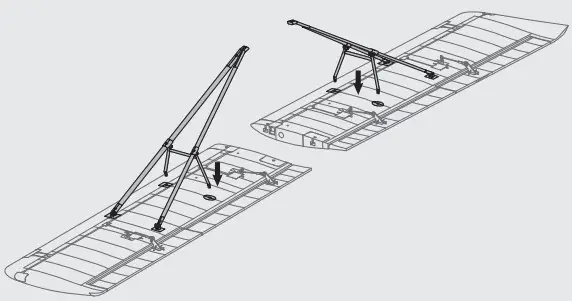
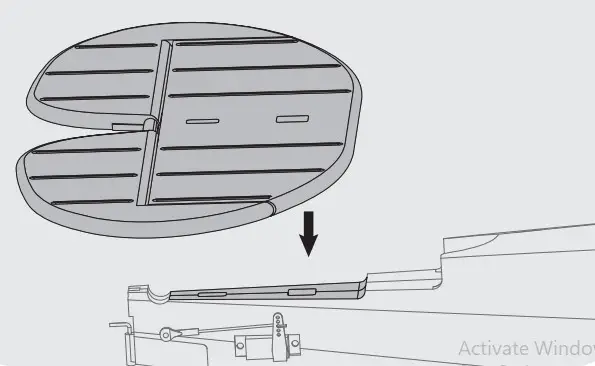
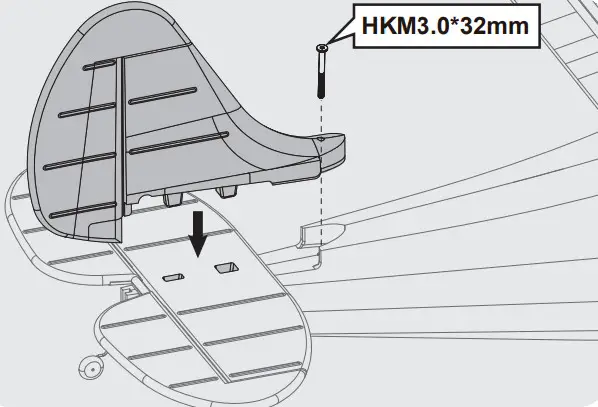
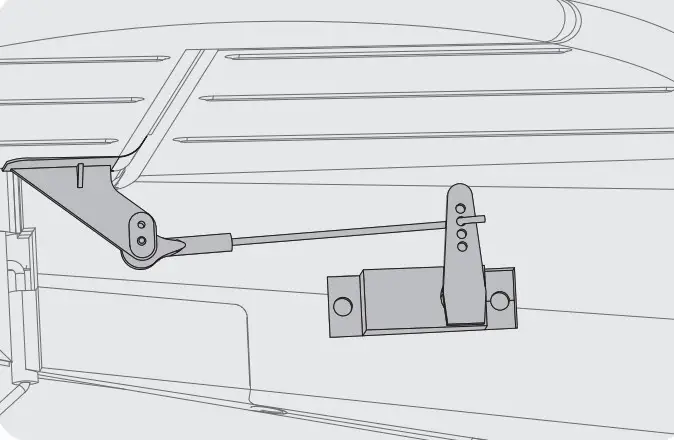

 After assembly and prior to your first flight, make sure all control surfaces respond correctly to your transmitter by referring to the diagram below.
After assembly and prior to your first flight, make sure all control surfaces respond correctly to your transmitter by referring to the diagram below.